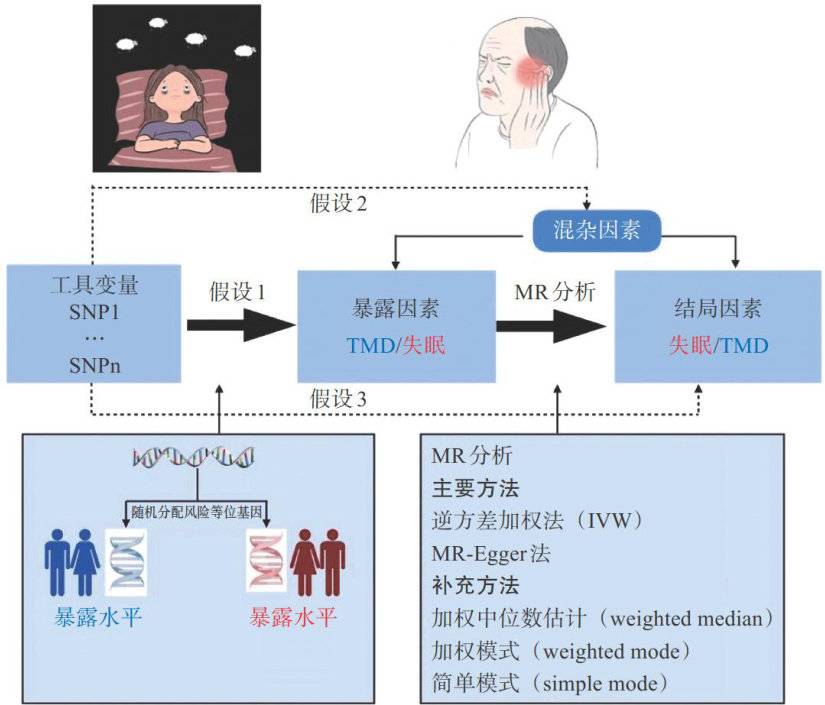颞下颌关节紊乱病与失眠之间因果关系的两样本孟德尔随机化研究


打开文本图片集
[中图分类号] R782.6[文献标志码] A [doi] 10.7518/hxkq.2025.2024255
[Abstract]ObjectiveThis study aimed to investigate the asociation between temporomandibular disorder (TMD) and insomnia using a two-sample Mendelian randomization (MR)approach.MethodsBidirectional MR analyses of twosamples,TD n=377277 andinsomnia (n=375359 ),wereperformed using genome-wide association study statisticspublishedintheFinnGendatabase.Instrumentalvariables werefirstscreened,andtheninversevariance weighting (IVW)and MR-Egger were used as the main-effect assessment methods.Weighted median,weighted mode,and
simple mode served as supplementary methods.We used IVW and MR-Egger to test for heterogeneity,as wellas MR-Egger intercepts to assess the single nucleotidepolymorphism(SNP)potential levelofmultiplicity effects.Sensitivity analyses were conducted based on
leave-one-out to identify potentiall influential SNPs.Allanalyses wereconducted by using the two-sampleMRR package and were considered statistically significant when P<0.05 .ResultsMR analysis showed the presence of TMDon insomnia(O R=1.089 , 95%CI : 1.017-1.166, P=0.014 ).Meanwhile,no effectof insomnia on TMD( OR= 0.996, 95%CI :0.964-1.029, P=0.816 )was found.The sensitivity-analysis showed that no heterogeneity existed( P> 0.05),and the presence of horizontal pleiotropy was not detected (P>0.05) .Leave-one-out sensitivity analysis showed no single SNP,which may affect thecausal relation.All findings indicated that thecausal relationshipbetweenTMDand insomnia was notsignificantlyafected byanyindividualSNPandthatIVdidnotbias theresults. ConclusionResults of MR analyses showed that TMD is a risk factorfor insomnia, whereas insomnia is not arisk factor for TMD.
[Keywords] temporomandibulardisorder; insomnia; Mendelian randomization; genome-wide association study;risk factors
颞下颌关节紊乱病(temporomandibulardisor-der,TMD)是最常见的慢性疾病之一,它是涉及咀嚼肌、颞下颌关节(temporomandibular joint,TMJ)和其他颌面解剖结构的肌肉骨骼疼痛[]。(剩余15824字)